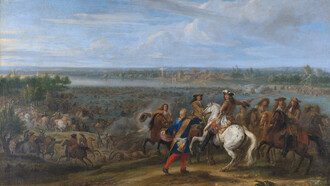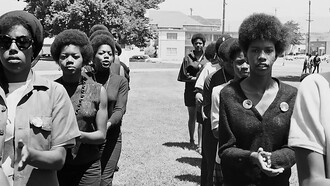Humans, like other animals, adapt to different environments through conditioning. In the past, these environments were much simpler: wild terrains, savage animals, dynamic weather, and fellow tribesmen. Our ability to bend to the “laws of nature,” and other conditions of various habitats, determined our ability to survive.
As we, at a very rapid pace, developed into modern humans, we started defying our limitations. We started leveraging and modifying resources—through building strong walls, clever armory, sustainable foods, and resilient shelters. We created complex structures, systems, economies, and institutions, that collectively worked together and phenomenally improved our chances of survival. We started thriving.
The origin of social conditioning
The conditioning that we now needed, meant getting accurately ‘domesticated’ to the artificially created civilized ecosystems—as a mandate. Our species grew in size as a result of this “artificial selection.” This change permanently changed the way in which modern humans have to live their lives.
A small unit of this artificially environment, diligently governed its members with a set-of-rules. Law and governance was born. The concept of “society” was born. The society as a small arbitary unit of collective group that declared how its members should live their lives
And to be sure of this conduct, the authoroitarian subgroups started enforcing and training members, in making them adhere to the rules.
This process that no human being can now evade, is called “social conditioning.”
Simply put, it is a domestication of the humans, by the humans, for them to live in a human-made-world!
And with every invention, there is a price we have to pay. With social conditioning, even if it allowed our thriving as a species, it counterintuitively, started constraining individual freedom and potential; Arendt’s view suggest that social conditioning can create in us ‘a sense and capacity to feel both free and enchained, and can have devastating effect in our abiltiy to engage with reality.’
Although we find it necessary to categorize ourselves for this fortitude, we must consider the ambiguity in the boundaries that separate us from our ancestors...
Human birth and our animal nature
A human birth is dramatic. After the pregnancy reaches term, the baby is expelled; a series of physiological changes in the mother and child, triggers the act of labor. The moment is dramatic and potray, to a great extent, the expliciteness of our animal nature—the coming out of baby covered in blood, amnion, and mucus, crying and throwing its limbs vigorously, as she catches a breath. The feelings of air entering its lungs and stretching its inside in itself are so overwhelming.
A human birth is natural. But we have become oblivious to our animal nature. We have sheltered ourselves in a civilized world (of how it is now). The world that is made comfortable by all the modern technologies and sciences, but often lacks the connectedness to our bodies and our rootedness to mother earth.
A modern human birth is beautiful. It doesn’t display the chronic artificial mediocrity that the modern societies propagate.
Self versus the true self
Yes, we go through life in mediocrity—the kind that makes us suppress. “The voice of knowledge,” “the dream of this world,” and “social conditioning” drift us away into a world that is laden with lies. A world that is constructed from the mind and its fears. We remain perpetually woven into this dream. Even our personal dreams are built, based on the lies that the ‘dream world’ feeds us.
It is like playing a game of mirrors, where the world represents a fairly imperfect mirror—constantly reflecting a distorted view of ourselves—prompting us to change ourselves to its likings; to look good enough! To feel worthy enough! This is how the dream of the planet and our individual dreams are created and constantly co-influence.
Fortunately, our truth doesn’t remain hidden for long. The bodily and soul needs are always finding any opportunity to surface and make themselves seen. Their messages can prompt towards the most authentic versions of ourselves, and we can take our intuition’s directive for its face value.
It is hard to remain in the midst of this persistent tug—of us getting pulled by the dream from one end and by the truth from the other (the truth that comes from our deepest core). If we put focus on the voice of our truth, it can reveal an epiphany: But who is this person who is pulled by forces from all sides? Where is the “Self” having its roots?
Is is the Self that is formed as a result of the dreaming world? Or is it an entity separate and lacks the abilty of dreaming?
Can we see that the learnings needed for surviving and thriving in the raw, natural, wild, and dynamic world were not authentically passed on as much as “the technical ones to sustain a man-made civilization? And the understanding of the deeper aspects of our spiritual existence was not bequeathed?
Well, some rare times we see a glimmer or a glow of love humanity shows towards its own keen. But it is fairly rare. It is fairly excluded by the process of conditioning. And the whole world has fallen prey to this misadventure.
The love we see is binding, not freeing. It binds us together under specific tags: relationally as mother, daughter, father, brother, etcetera, or geographically as of region, state, country, or continent.
But the love we see may also be freeing if we really understand our true selves and the existence around us.
The awareness might free us to live our best lives.
The love might!
References
Wikipedia. (n.d.). Social conditioning. In Wikipedia. Retrieved October 7, 2024.
Ruiz, D. M. (1997). The four agreements: A practical guide to personal freedom. Amber-Allen Publishing.
Hunt, J. (2024). Chapter Four: Social conditioning and analytical dualism. In Judging complicity: How to respond to injustice and violence (pp. 86-113). Edinburgh University Press.















